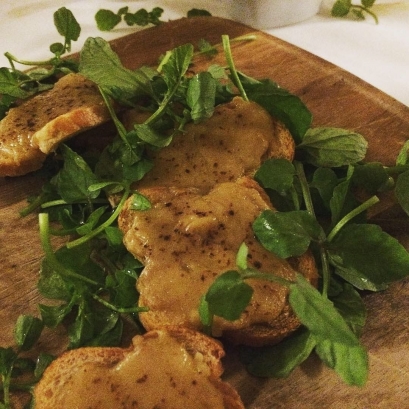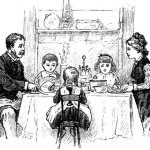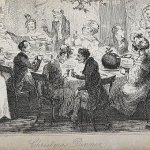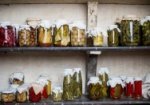Late last year, Vaucluse House Museum and the Vaucluse House Tearooms played host to over 100 Charles Dickens ‘fellows’ – delegates from across the world who gathered in Sydney for the 112th International Dickens Fellowship Conference. The conference theme was ‘Boz in Oz: Charles Dickens’ colonial connections’.
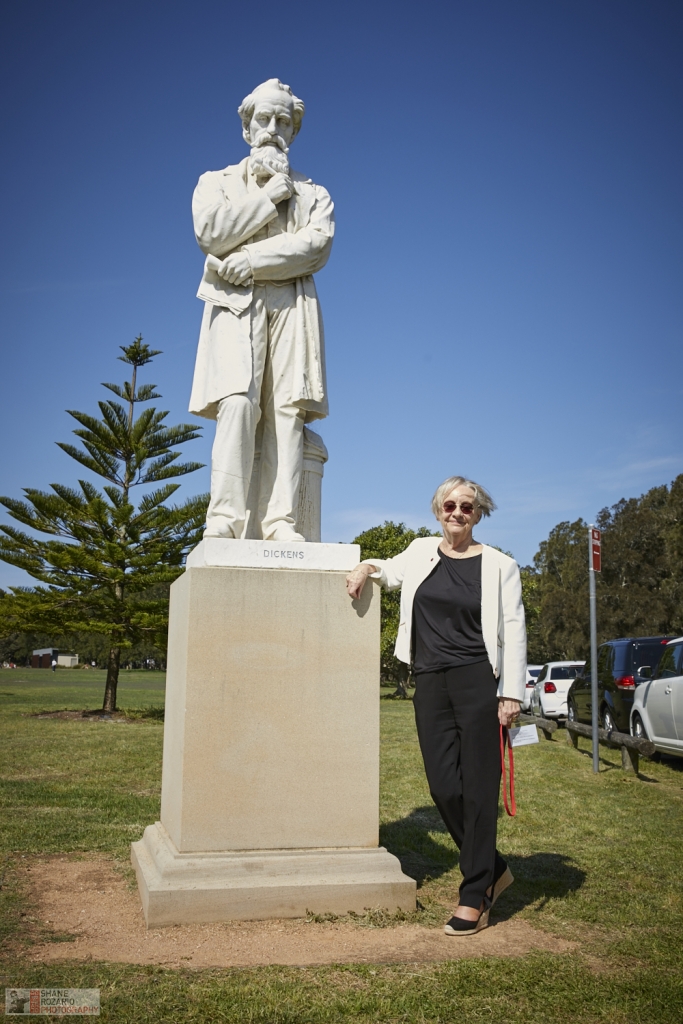
A conference delegate at the Charles Dickens statue in Sydney’s Centennial Parklands, one of few marble statues of the author in the world. Photo © Shane Rozario www.shanerozario.com
Gothic tastes
Vaucluse House’s Gothic architectural embellishments and high-Victorian interiors reflect the Dickens era, albeit colonial style.

Vaucluse House and pleasure gardens, a perfect setting for a Dickens-inspired evening. Photo © James Horan for Sydney Living Museums
After a private twilight viewing of the house, and canapes on the verandah overlooking the harbourside pleasure gardens, delegates proceeded to the Vaucluse House Tearooms for a banquet inspired by Catherine Dickens’s menus published in What shall we have for dinner? (see below).
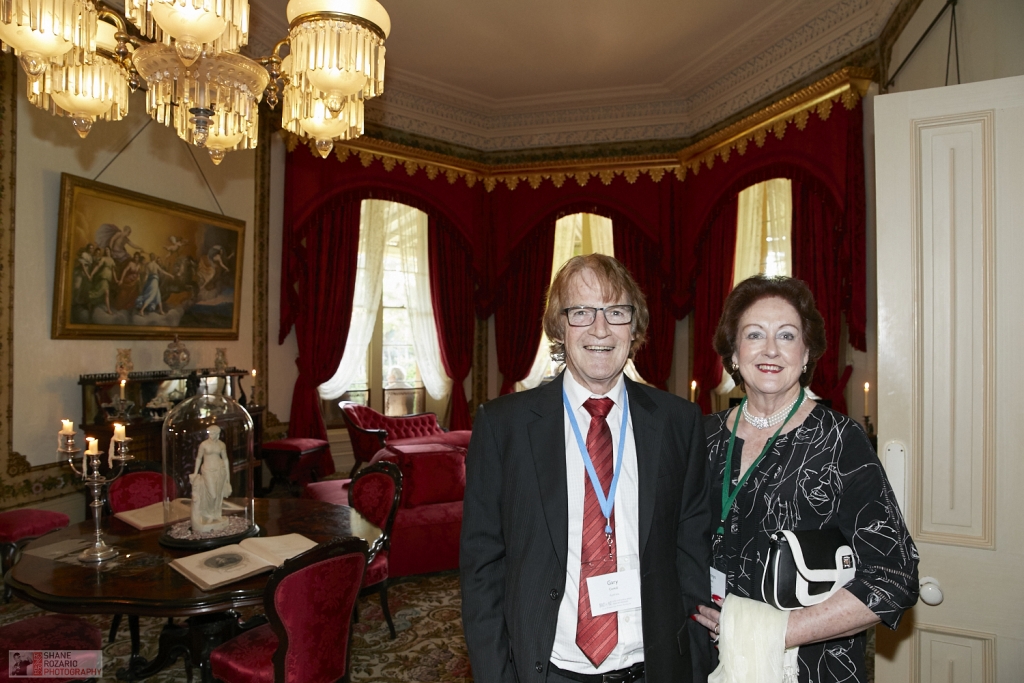
Fellowship members tour Vaucluse House before dinner Photo © Shane Rozario www.shanerozario.com
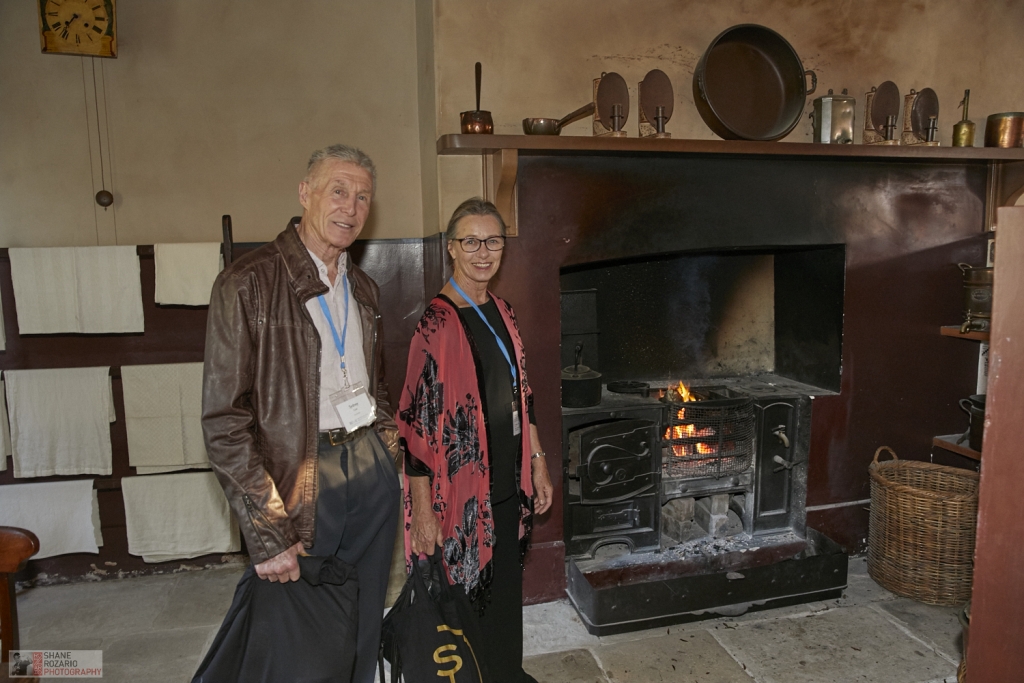
Banquet guests explore the 1830s kitchen at Vaucluse House Photo © Shane Rozario www.shanerozario.com
On the menu
Vaucluse House Tearooms executive chef and The Fresh Collective team oversaw the menu, which was redolent with flavours of the Dickens’ era, but served in a more contemporary style. The canapes – asparagus soup, pickled salmon and roast beef and Yorkshire pudding –represented the first course according to the dining style of the day, a la Francaise. The main and sweet ‘pudding’ courses (which may have been presented on the table all at once back in the day) were the prestigious saddle of lamb, de-boned, tail removed and stuffed for this occasion, followed by individual cabinet puddings laced with plums soaked in liqueur.
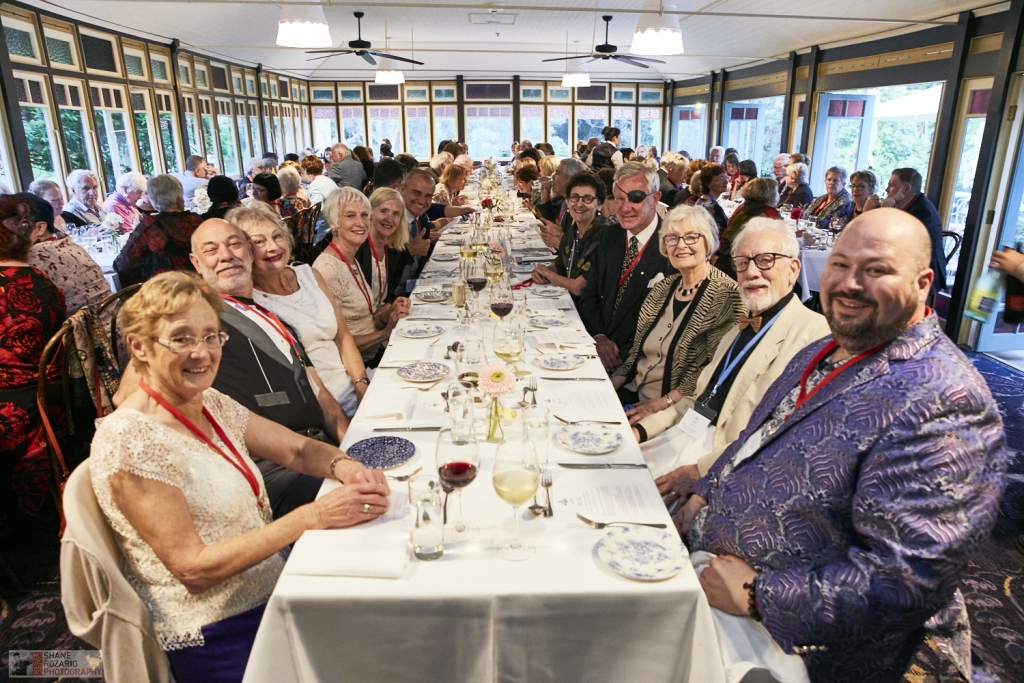
Guests take their places in the Vaucluse House Tearooms for a Dickens inspired banquet Photo © Shane Rozario www.shanerozario.com
A tasty finale
The biggest hit for many guests was the simplest element of the meal – grilled cheese toasts, Welsh rabbit or ‘rarebit’ style (recipe below) – were served with sprigs of watercress in the dessert course at the end of the meal, after the sweets or pudding. It was some time later in the 1800s that ‘dessert’ meant sweets course rather than a selection of sweet and savoury morsels. For this occasion rich fruit jellies were the sweet dessert option, although Charles may have forgone these in favour of the toasted cheese.
‘Toasted cheese’ was Dickens’ favourite way to conclude a meal, and appears in 27 menus in Catherine’s book, albeit family meals rather than more sophisticated social banquets. According to Dickens’ eldest son Charley:
“no man could possibly survive the consumption of such frequent toasted cheese.”
Charles Dickens (junior), ‘Reminiscences of My Father’ in Windsor Magazine, Christmas supplement, 1934
sourced from Charles Dickens Museum, London
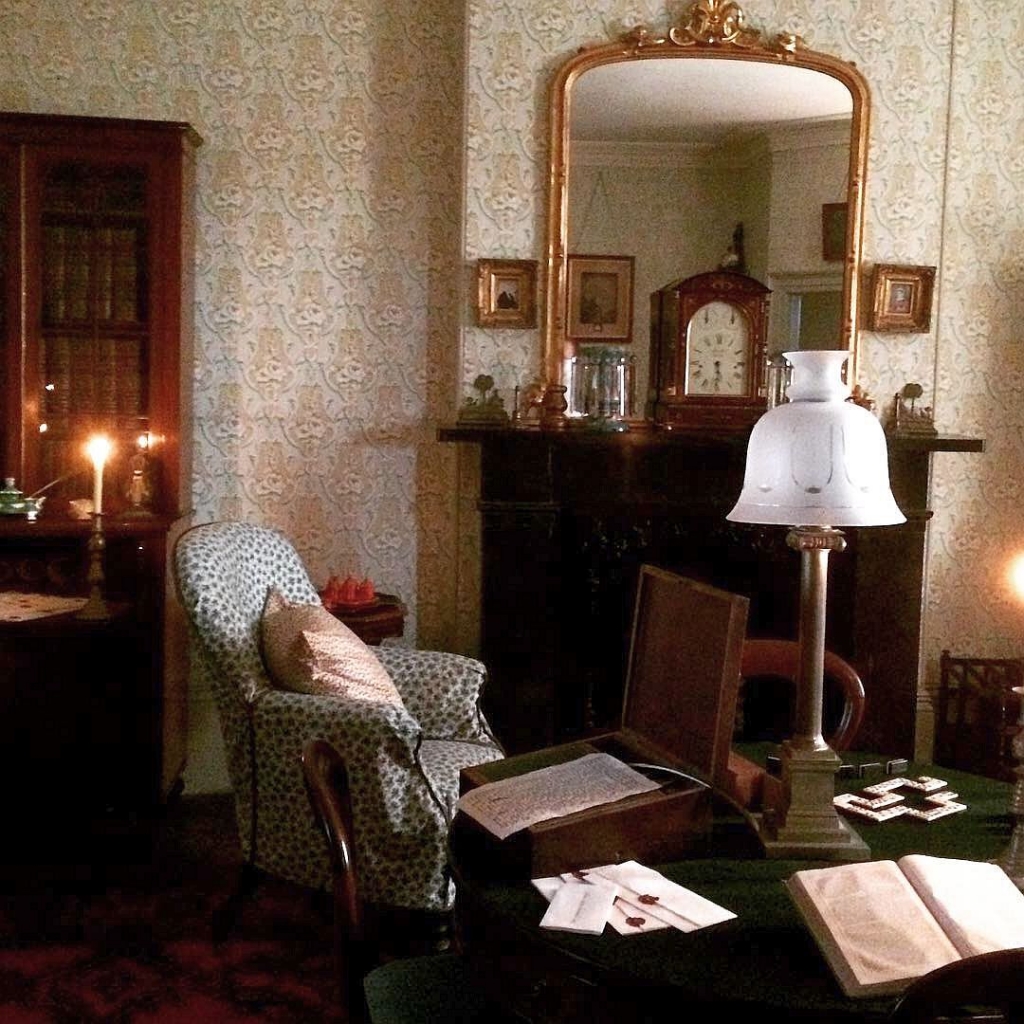
The ‘second room’ at Vaucluse House with a copy of Dickens’ Household Words displayed on the table. Photo Jacqui Newling © Sydney Living Museums
Household Words
There are several editions of Dickens’s Household Words in the museum collection, dating from 1850 – 1855. Dickens relied on various contributors for content on the Antipodes, including John Lang, who published a selection of the stories featured in Household Words in Botany Bay, true tales of early Australia. Some of them are somewhat spurious though make fascinating reading; I particularly enjoy the description of the bountiful larder of the bush-rangers’ Fox, Pitt and Burke in ‘Three Celebrities’:
The [bushrangers’] abode itself had been cleanly kept. Everything was in the neatest order; while the land, considering that the bushrangers were but amateur agriculturists, was very well tilled. In the dairy were found both butter and cheese of their own making; in the store-house salted beef and pickled pork of their own curing. In short, there were very few farms in the colony better stocked. They had abundance of poultry and pigeons.
Such was the impression of life in the colonies, an enviable existence to many ‘decent’ folk living in England in the mid-19th century.
Snakes alive!
Dickens readers no doubt enjoyed the story of Sir Henry Browne Hayes, an eccentric Irish knight sent to Australia as a convict in 1802 and the original occupant of Vaucluse House, and his solution for ridding the property of the snakes which plagued the property in great numbers. A ‘slippery’ tale at best, but highly amusing and legendary in Vaucluse’s history and the many stories that surround it.

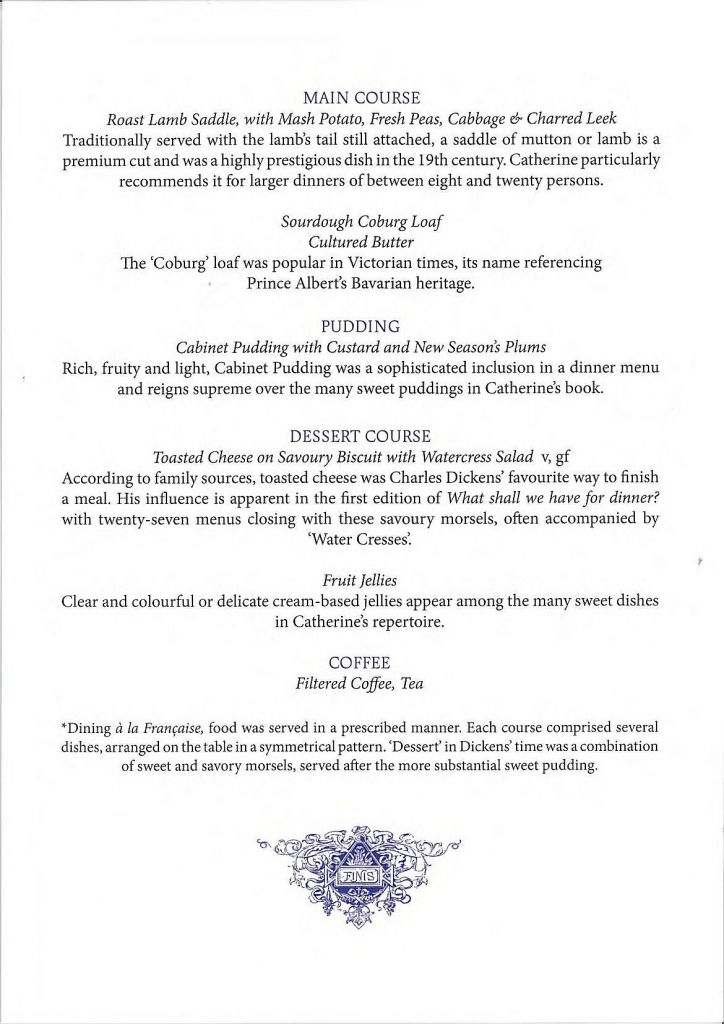
Boz in Oz menu inspired by Catherine Dickens’ ‘What shall we have for dinner?’ © NSW Dickens Society
Welsh ‘rabbit’ or rarebit
Ingredients
- 60ml ale (beer)
- 30g butter
- 125g cheddar or gruyere cheese, grated
- pinch cayenne pepper
- 1 teaspoon English mustard (or French for a milder taste)
- 4 slices of hot buttered toast, to serve
Note
There is much debate as to which is the correct title; both are used in 19th-century cookbooks. For 'Irish rabbit' a chopped gherkin can be added to the melted cheese mixture.
Directions
| Put the ale and butter in a saucepan over low heat. When the butter has melted, add the cheeses, cayenne pepper, mustard and a pinch of salt. Stir until the cheese melts and the mixture comes to a simmer, using a figure of eight motion to prevent the cheese from binding. Meanwhile prepare the toast. Remove from cheese mixture the heat and allow the mixture to settle for a few seconds before spooning it onto the toast. Serve immediately – the cheese mixture will firm as it cools. | |
| COOK'S TIP: the cheese mixture can be made in advance and refrigerated until required (up to three days). It will harden when cold, so spread onto the toasts and put under a hot grill until it melts, being careful not to scorch the edges of the toast. | |
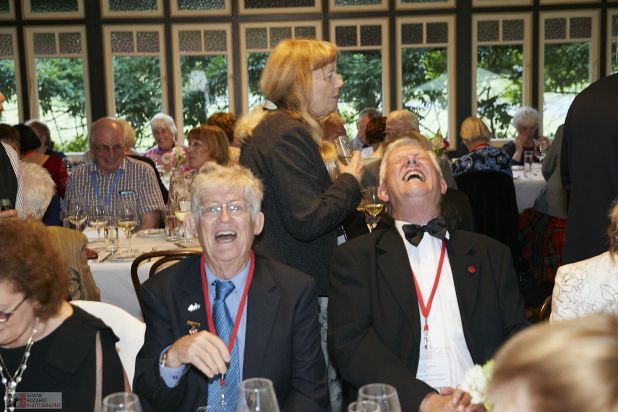
 Print recipe
Print recipe